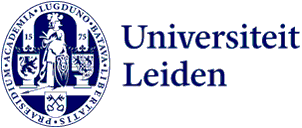An introduction to Bayesian statistics
“Friends don’t let friends use p values.” This statement reflects a growing body of criticism against the use of p values, which are accused of being uninformative, unintuitive, and prone to misuse. How probable is one hypothesis compared to another given my data? Is my null hypothesis true or is my data not informative enough to distinguish between hypotheses? What are the most likely values of my parameters? Contrary to common misconceptions, “traditional” frequentist metrics like p values and confidence intervals do not answer these questions while Bayesian alternatives like Bayes factors and credible intervals do. The current course offers a bite-sized introduction into Bayesian statistics and its applications to the most common research questions in social and behavioral sciences.
- Target group
-
Lecturer
Superior
Non-academic staff
Researcher
Postdoctoral researcher
PhD candidate - Teachers
- Jacqueline Zadelaar (Assistant professor) Tom Heyman (Assistant professor)
- Method
-
Training course
Deadline registration: 2 January 2026
Course description
Bayesian statistics include many of the same analyses as frequentist statistics, such as t-tests and regression analyses, but its fundamental assumptions are different and it relies on different metrics to make inferences about hypotheses and parameters. This results in several advantages, such as: (1) more intuitive and informative results, (2) more flexibility in the data collection process, and (3) more accurate estimation in relatively small samples. Because Bayesian statistics involve intensive and time-consuming calculations, which rendered them unfeasible in a time before computers, this form of statistics received little attention before the 1990’s. In recent decades, however, Bayesian statistics have gained traction among the scientific community, including the social and behavioral sciences, with an increase in literature, education and user-friendly software adding to its accessibility. The current course serves as a first step into understanding and applying Bayesian statistics, with a focus on simple, intuitive explanations, concrete examples, and practical applications.
Learning goals:
I. Knowledge and understanding: gain basic knowledge and understanding of the fundamentals of frequentist and Bayesian statistics and, consequently, the differences between the two to allow informed decision making about what method is beneficial in what situation;
II. Skills: acquire skills in performing basic Bayesian analyses in statistical software, specifically JASP and/or R;
III. Application: learn how to apply the aforementioned knowledge, understanding and skills to answer simple research questions via Bayesian inference.
Mode of instructions
Each morning and each afternoon consists of a lecture and a practical. The lecture covers theory and application, both illustrated using examples. During the practicals, attendees work individually on exercises provided by the teachers, most of which are analyses performed in R / Rstudio or JASP. Solutions are made available at the start of the practical and teachers are available for questions. During the afternoon of the last day, attendees may choose to work on their own research, applying their newfound knowledge and skills. Again, teachers are available for questions and support.
Students should bring their own laptop. Download and install R (and Rstudio) and JASP (version 0.95.1) on this device. Make sure that the software is functional before the start of the course.
Read: Ortega & Navarrete (2017) and Etz et al. (2018).
Reading List
Ortega, A., & Navarrete, G. (2017). Bayesian hypothesis testing: An alternative to null hypothesis significance testing (NHST) in psychology and social sciences. Bayesian Inference, 10. https://dx.doi.org/10.5772/intechopen.70230
Etz, A., Gronau, Q. F., Dablander, F., Edelsbrunner, P. A., & Baribault, B. (2018). How to become a Bayesian in eight easy steps: An annotated reading list. Psychonomic Bulletin & Review, 25(1), 219-234. https://doi.org/10.3758/s13423-017-1317-5
Entry requirements
Basic knowledge of frequentist statistical concepts such means, standard deviations, null hypothesis, alternative hypothesis, probability, probability distributions, p values and statistical significance.
Basic skills in the software R/Rstudio are preferable but not a requirement.
Questions?
Contact Jacqueline Zadelaar: j.n.zadelaar@fsw.leidenuniv.nl
